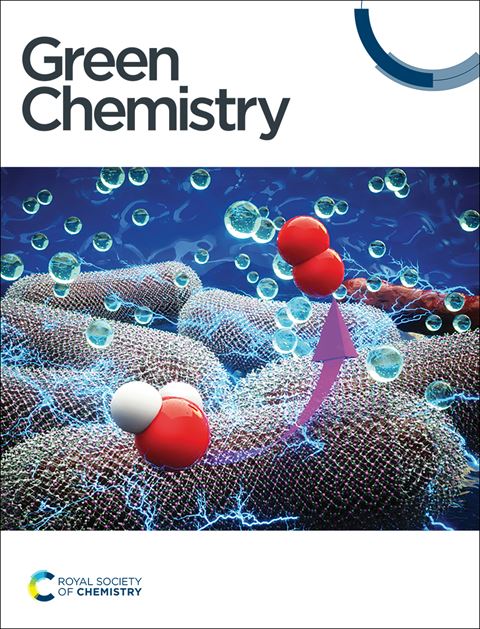Tensile-strain-driven interstitial Ru doping structure on an FeCoP/FF electrode accelerates the reaction kinetics of water electrolysis†
IF 9.2
1区 化学
Q1 CHEMISTRY, MULTIDISCIPLINARY
引用次数: 0
Abstract
Ru atoms with a large radius are often doped into a lattice as substituents due to reaction kinetics and thermodynamics limitations. Therefore, overcoming kinetic resistance to realize interstitial Ru doping in phosphides and establishing the internal relationship of its electrocatalytic performance are challenging. Considering that the tensile strain induced by a quenching-induced huge temperature difference can provide the possibility of interstitial doping, an interstitially Ru-doped FeCoP/FF electrode with 2.32% tensile strain was innovatively constructed by a strain-driven interstitial Ru doping strategy. As expected, the Ru-FeCoP/FF∥Ru-FeCoP/FF electrolyzer needs a cell voltage of only 1.64 V to deliver 1 A cm−2. Notably, the tensile strain and interstitially doped Ru synergistically promote the movement of electrons from Fe and Co sites to P and plummeting of the activation energy (Ea), thus accelerating the reaction kinetics of HER and OER. Overall, this work provides new ideas for designing an Ru interstitially doped electrode and optimizing the HER and OER kinetics.

FeCoP/FF电极上的拉伸应变驱动的Ru掺杂间隙结构加速了水电解反应动力学†
由于反应动力学和热力学的限制,半径较大的钌原子通常作为取代基掺杂到晶格中。因此,克服动力学阻力实现磷化物中Ru的间隙掺杂并建立其电催化性能的内在关系是一个挑战。考虑到淬火引起的巨大温差引起的拉伸应变为间隙掺杂提供了可能,采用应变驱动的间隙Ru掺杂策略,创新性地构建了拉伸应变为2.32%的间隙Ru掺杂FeCoP/FF电极。正如预期的那样,Ru-FeCoP/FF∥Ru-FeCoP/FF电解槽只需要1.64 V的电池电压就可以输出1 a cm−2。值得注意的是,拉伸应变和间隙掺杂的Ru协同促进了电子从Fe和Co位点向P的移动,降低了活化能(Ea),从而加速了HER和OER的反应动力学。本研究为Ru间质掺杂电极的设计以及HER和OER动力学的优化提供了新的思路。
本文章由计算机程序翻译,如有差异,请以英文原文为准。
求助全文
约1分钟内获得全文
求助全文
来源期刊

Green Chemistry
化学-化学综合
CiteScore
16.10
自引率
7.10%
发文量
677
审稿时长
1.4 months
期刊介绍:
Green Chemistry is a journal that provides a unique forum for the publication of innovative research on the development of alternative green and sustainable technologies. The scope of Green Chemistry is based on the definition proposed by Anastas and Warner (Green Chemistry: Theory and Practice, P T Anastas and J C Warner, Oxford University Press, Oxford, 1998), which defines green chemistry as the utilisation of a set of principles that reduces or eliminates the use or generation of hazardous substances in the design, manufacture and application of chemical products. Green Chemistry aims to reduce the environmental impact of the chemical enterprise by developing a technology base that is inherently non-toxic to living things and the environment. The journal welcomes submissions on all aspects of research relating to this endeavor and publishes original and significant cutting-edge research that is likely to be of wide general appeal. For a work to be published, it must present a significant advance in green chemistry, including a comparison with existing methods and a demonstration of advantages over those methods.
 求助内容:
求助内容: 应助结果提醒方式:
应助结果提醒方式:


